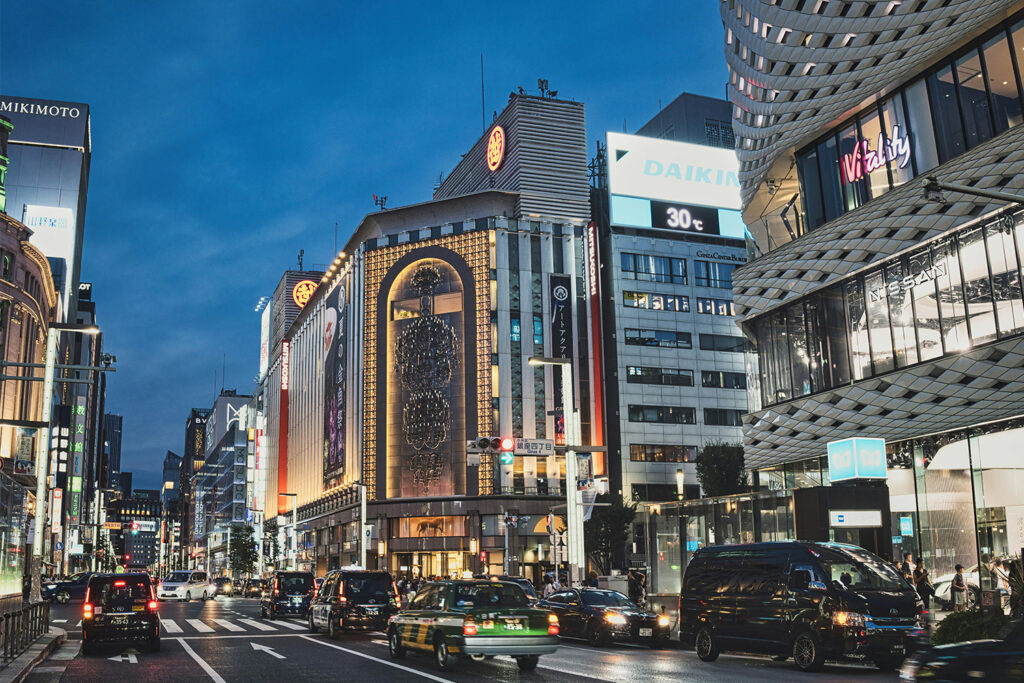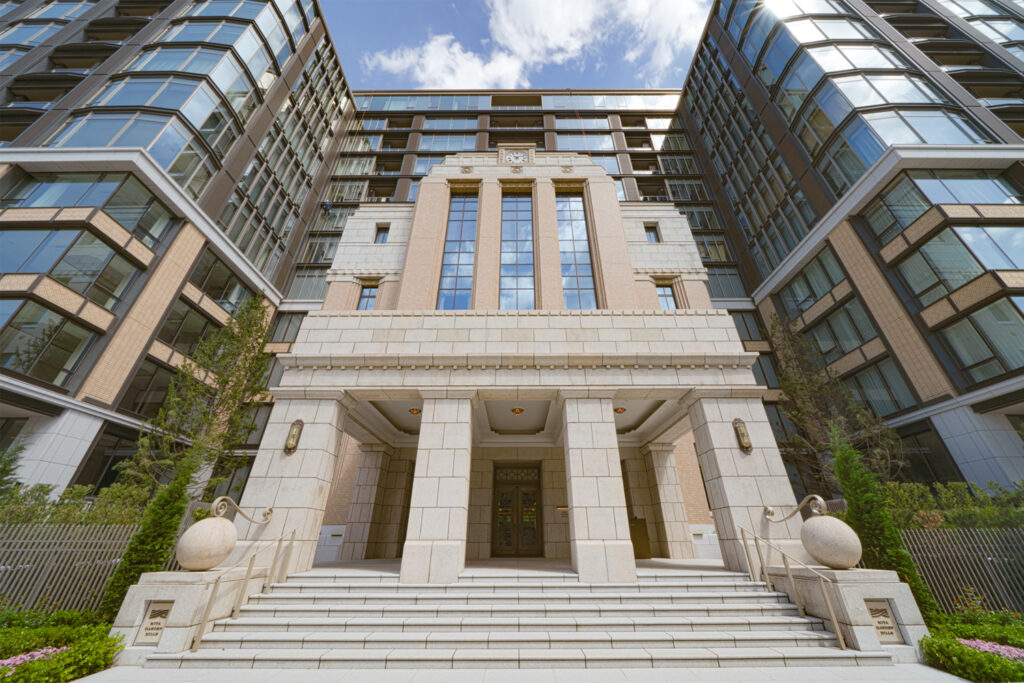
Reclaimed Land in Japan
Reclaimed land in Japan refers to land that has been artificially created by filling in or extending a body of water, such as a bay or a coastline, using materials such as soil, waste materials, sand, and rock. This process, known as land reclamation, has a long history in Japan dating back to the Edo period.
While we may associate reclaimed land sites with negative connotations of garbage disposal, it has played an important role in urban areas, providing essential services such as securing harbors, securing residential areas for the growing urban population and providing land for factories. In recent years, we’ve seen an increase in condominiums built on reclaimed land such as bay and seaside areas. This is because industrial and warehouse areas, previously occupying these locations, have been abandoned and redeveloped as residential areas. Since developers find it difficult to purchase large tracts of land inland, and the large, inexpensive lots, these reclaimed areas are perfect for them to begin new developments.

Tokyo Bay Area Map: Tokyo Metropolitan Government/Tokyo Updates 2022.01.31
Examples of Reclaimed Land Developments in Japan
Toyosu
One area with a concentration of popular condominiums on reclaimed land is Toyosu, home to City Towers Toyosu the Symbol, City Towers Toyosu the Twin, Toyosu Ciel Tower, and Park Homes Toyosu the Residence. The bay area where Toyosu is located is also popular with young households, making it a vibrant area. Its easy access to the Tokyo metropolitan area is not to be overlooked, with Tsukishima and Kachidoki only a 5-minute drive to Ginza. The view of the bay area from high-rise condominiums is nothing short of spectacular.
Tokyo Bay
In Tokyo Bay, land reclamation has been used since the 16th century, with the purpose of creating more space for development, industry, and other activities. As of 2012, about 250 square kilometers of land has been reclaimed from the Tokyo Bay, roughly 15% of the original bay area.
The Future of Tokyo Bay
“Tokyo Bay eSG Project”, an ambitious effort to create a new model for urban development in Japan was announced in April 2021 by the Tokyo Metropolitan Government (TMG). Led in partnership with a consortium of companies, including Mitsubishi Estate Co., Sumitomo Realty & Development Co., NTT Urban Solutions Inc. and NEC Corp, the project aims to create a new city district in the Tokyo Bay area that will feature a mix of residential, commercial, and cultural facilities, as well as extensive green spaces and transportation infrastructure.
Toyota Motor Corp. also announced plans to build a new sports arena near the Tokyo Bay project, scheduled to open in 2025. The upcoming arena will prioritize mobility technology and sustainability and serve as the home stadium for Toyota Alvark Tokyo, the professional basketball team sponsored by the automaker. Additionally, the arena will host various other sports events in the future.
The Case for Odaiba
Odaiba, a waterfront sub-center in Tokyo, was created in the 1960s through land reclamation efforts in Daiba, Aomi, Ariake North, and Ariake South. Initially intended as a new business and financial center, the Tokyo Metropolitan Government (TMG) hoped to attract real estate developers with the prospect of rising land prices. Despite a struggle to draw firms to the area after the burst of the bubble economy, the plan now is to continue developing the area for residents and as a tourist attraction, leveraging existing hotels and the multipurpose complex known as Palette Town, which includes a shopping mall, Fuji TV center, hotels, offices, and a ferris wheel.
Odaiba’s popularity as a residential area in Japan is due in part to its modern infrastructure, which includes excellent public transportation links that make it an attractive location for those who work in central Tokyo. In addition, the area features several parks and open spaces that provide opportunities for outdoor activities and relaxation. With its reputation as a safe and peaceful neighborhood, Odaiba is also an appealing location for families with children. All of these factors contribute to Odaiba’s desirability as a residential area in Japan.
Harumi Area
The Harumi area is a prime example of successful waterfront redevelopment in Tokyo. The area, which was created by the Sumida Improvement Project in the 1910s to 1930s, has undergone significant redevelopment over the years, particularly in recent times. In 1998, the Harumi Island Triton Square was built in 1-chome, Harumi. This high-rise office, commercial, and residential complex marked the beginning of rapid development in the area, with numerous high-rise buildings and large tower apartments being constructed in subsequent years.
The Harumi area has gained further attention as the location of the athlete’s village for the postponed 2020 Tokyo Olympic Games. After the games, the village will be converted into apartments and continue to serve as a new residential community. The Harumi development project is a testament to the success of waterfront redevelopment in Tokyo, with its modern infrastructure and amenities attracting attention and creating high expectations for further development in the future.

View of Tokyo from Odaiba Beach
Considerations for Living in the Bay Area
Living in reclaimed areas in Japan can be an attractive option for those who prioritize location and affordability. The Bay Area has become a vibrant and popular residential neighborhood, particularly for young households. Additionally, easy access to transportation and the city’s amenities makes living in reclaimed areas an attractive investment opportunity.
It is important to note that Japan has a long history of reclaiming land and has developed advanced technologies and construction standards to ensure the safety and stability of reclaimed land. Despite the concerns of liquefaction, it should be noted that the Japanese government has imposed strict safety measures to ensure that the reclaimed land is safe for use. Additionally, the development of reclaimed land has played a significant role in accommodating the growing needs of Japanese society, particularly in urban areas where space is limited. Overall, while there are certain risks associated with land reclamation, Japan’s expertise and commitment to safety should reassure the public that reclaimed land is a safe and valuable resource for the country.
Source:
Story Maps – Land Reclamation in Tokyo: The Past and Present of the Prospect of a Waterfront City: 12 December 2019
2023 Tokyo Metropolitan Government, Bureau of Port and Harbour, Port of Tokyo Creating Landfill
LIFULL Co.,Ltd. Umetatechi
2023 Tokyo Metropolitan Government, Tokyo Bay eSG Project
2022 Tokyo Metropolitan Government, Tokyo Updates, 31 January 2022
What Next?
At Housing Japan, we specialise in buying, selling, and managing residential luxury real estate in Japan. Whether you are a local resident or simply seeking a second home or temporary residence for business trips, we have you covered. Our one-stop service includes expert management services, so you can sit back and relax knowing that everything is taken care of. Whether you are looking for a luxurious living experience or an investment opportunity, we are here to help you every step of the way.
Don’t forget to check out our socials!
Request Information
Housing Japan
7F BPR Place Kamiyacho, 1-11-9 Azabudai, Minato-ku, Tokyo, Japan 106-0041











